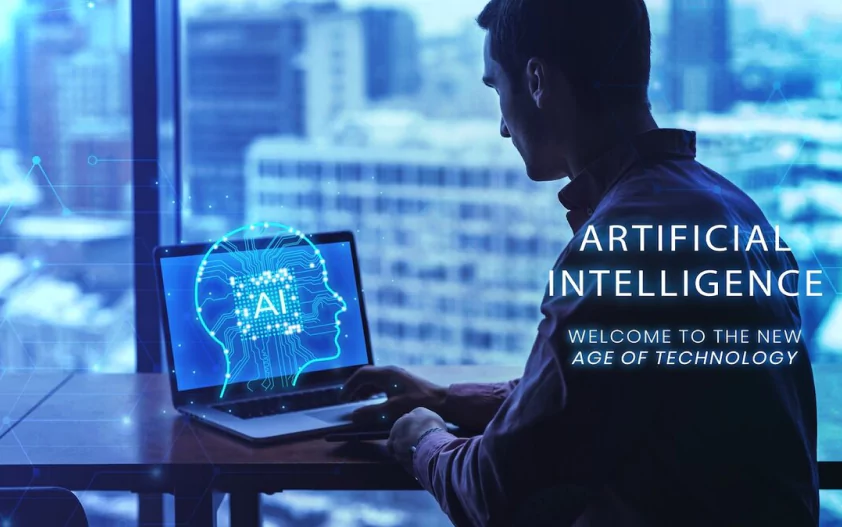Exploring Artificial Intelligence (AI) and Machine Learning
Artificial Intelligence (AI) and Machine Learning (ML) are among the most transformative technologies of the 21st century, revolutionizing industries and reshaping the way we interact with technology. Artificial Intelligence & Machine Learning are driving these changes and improving efficiency across various sectors. Here’s an overview of Artificial Intelligence & Machine Learning, their applications, and their impact on various industries.
1. What is Artificial Intelligence (AI)?
AI refers to the simulation of human intelligence by machines, allowing them to perform tasks that typically require human intelligence, such as reasoning, learning, and decision-making. AI systems fall into two broad categories: Narrow AI, designed for specific tasks, and General AI, capable of performing any intellectual task a human can.
- A Brief History of AI: The history of AI dates back to the 1950s when the concept of artificial intelligence was first proposed by pioneers like Alan Turing. The field has evolved significantly, thanks to advances in computer processing power, data availability, and innovative algorithms. To understand more about the history of AI, check out this AI history article.
2. What is Machine Learning (ML)?
Machine Learning, a subset of AI, focuses on developing algorithms that enable computers to learn from data and continuously improve their performance without explicit programming. Artificial Intelligence & Machine Learning work together to enable machines to identify patterns and make data-driven decisions. ML has the ability to refine itself as it processes more data, making it a powerful tool for prediction and optimization.
Types of Machine Learning
There are several types of machine learning, including:
- Supervised Learning: The model is trained with labeled data.
- Unsupervised Learning: The model learns from unlabeled data, identifying patterns on its own.
- Reinforcement Learning: The model learns by interacting with its environment and receiving feedback.
3. Applications of AI and ML
Artificial Intelligence & Machine Learning are driving innovation across industries. Below are some of the key applications:
- Natural Language Processing (NLP): AI-powered NLP enables machines to understand, interpret, and generate human language. For example, applications include virtual assistants like Siri and Alexa, language translation tools, sentiment analysis, and chatbots.
- Computer Vision: Additionally, ML algorithms allow computers to process visual information. This supports innovations such as facial recognition, object detection, and autonomous vehicles.
- Predictive Analytics: Moreover, by analyzing historical data, ML models predict future trends and outcomes. Industries such as finance, healthcare, and cybersecurity rely heavily on predictive analytics.
- Recommendation Systems: Furthermore, AI-driven recommendation engines personalize user experiences by analyzing behavior and preferences. For instance, platforms like Netflix provide movie recommendations, Amazon suggests products, and social media feeds are tailored to individual users.
4. Impact on Society and Economy
Artificial Intelligence & Machine Learning have the potential to drive significant economic growth and productivity across industries. They can improve operational efficiency, foster innovation, and create new business opportunities. However, there are concerns regarding job displacement, ethical implications, and data privacy that need to be addressed to ensure that AI benefits society as a whole.
To explore more about AI’s impact on society, visit AI Now Institute, which focuses on the social implications of AI technology.
5. Future Directions
AI and ML continue to evolve rapidly, with research focused on developing more sophisticated and transparent models. Some emerging areas include:
- Explainable AI: This involves creating AI systems that can provide understandable explanations for their decisions.
- Federated Learning: A privacy-preserving technique where machine learning models are trained across decentralized devices while keeping data local.
- Quantum Computing: As quantum computers become more advanced, they will enable AI models to process data more efficiently, unlocking new possibilities.
6. Ethical Considerations in AI and ML
As Artificial Intelligence & Machine Learning become more integrated into everyday life, various ethical concerns are emerging. These include key issues like bias in algorithms, privacy, and accountability. Addressing these concerns is crucial to ensure that AI & ML are used responsibly and ethically.
- Bias in Algorithms: For instance, AI systems may unintentionally inherit biases from the data they are trained on, leading to unfair or discriminatory outcomes.
- Privacy: Additionally, AI & ML applications often require vast amounts of personal data, which raises significant concerns about data privacy and security.
- Accountability: Moreover, when AI makes decisions in critical areas such as healthcare or law enforcement, ensuring accountability is essential to avoid harmful consequences.
Organizations such as the Partnership on AI are working to address these issues and promote the responsible use of AI.
7. AI in Creative Fields
Artificial Intelligence & Machine Learning are also making waves in creative industries. From generating artwork to composing music, AI is expanding the boundaries of creativity. AI-generated art platforms like DALL-E create stunning visual pieces, while AIVA composes music across various genres.
Conclusion
Artificial Intelligence & Machine Learning are truly transformative technologies, capable of revolutionizing industries and enhancing our lives in countless ways. As these technologies advance, they open up new opportunities for innovation and progress. By using AI & ML ethically and responsibly, we can ensure their positive impact on society. Furthermore, as AI & ML continue to evolve, they will undoubtedly shape the future of how we live, work, and interact with technology.

